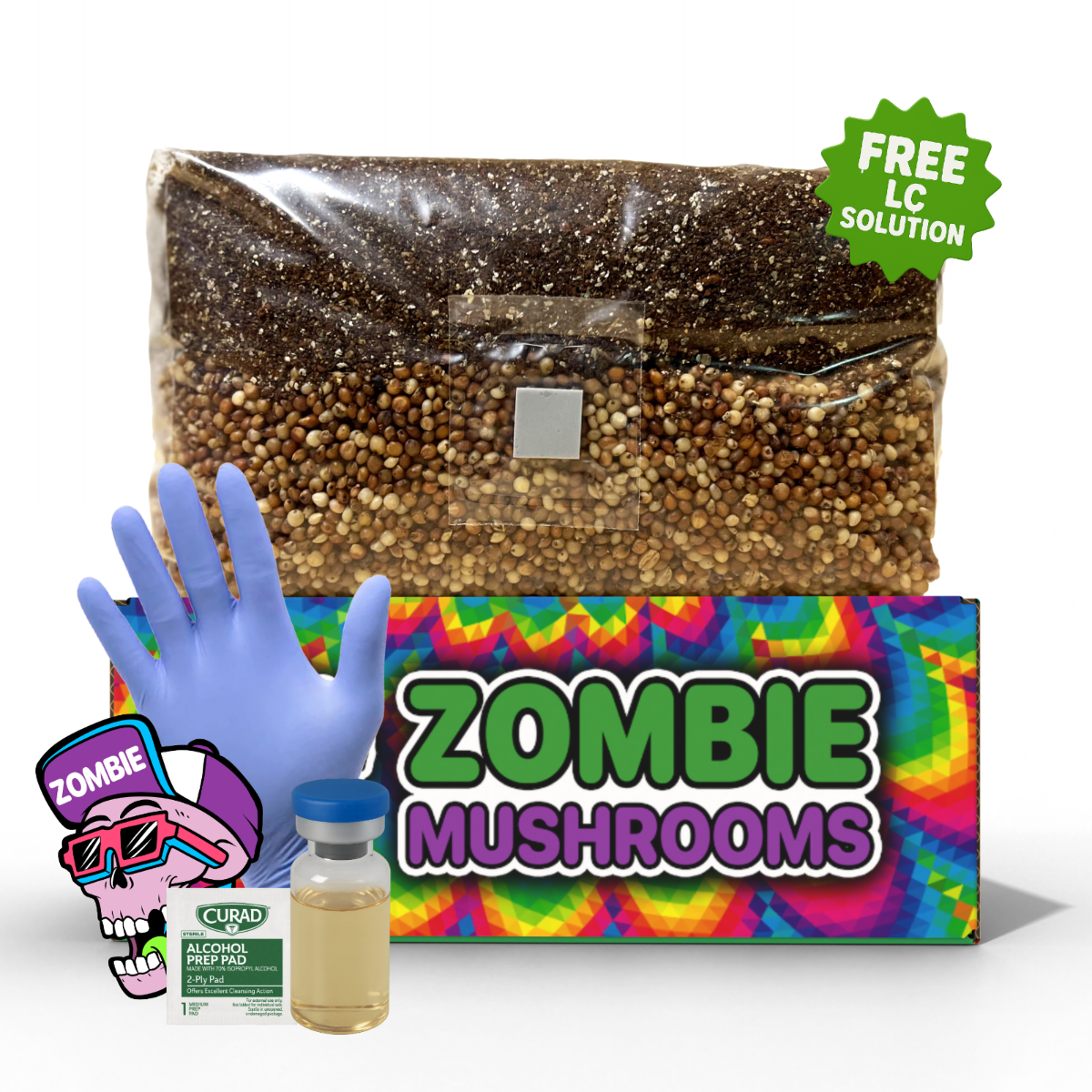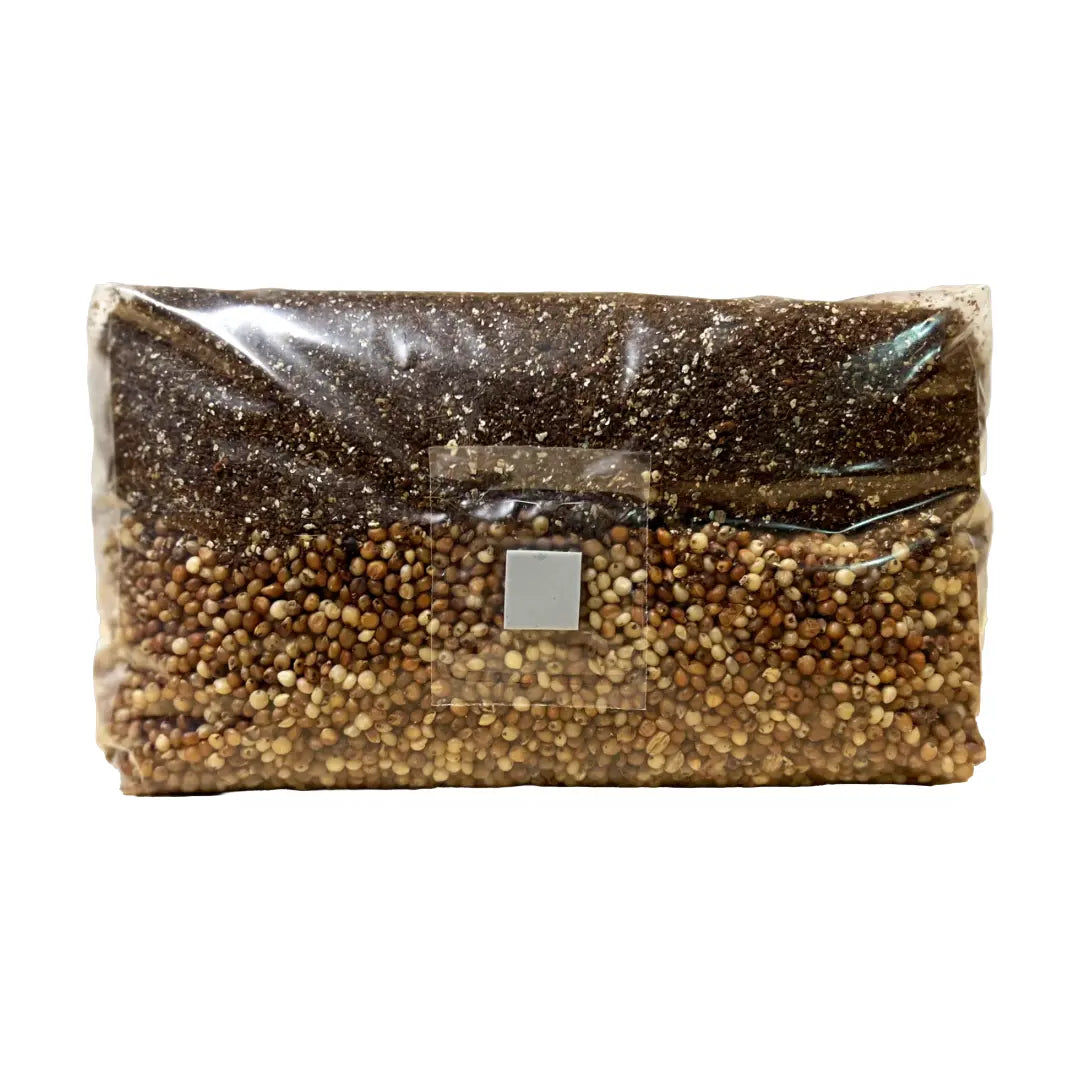- Portobello mushrooms are simply mature Agaricus bisporus mushrooms with enhanced flavor and nutrition.
- Good indoor growing conditions include 70–75°F when colonizing and 60–65°F when fruiting.
- A single cycle of portobello growing can produce 5–10 pounds per square foot.
- Used mushroom substrate can be composted and reused to improve garden soil.
- Poor air circulation and contamination are major reasons for mushroom crop failures.
Understanding Portobello Mushrooms
Portobello mushrooms (Agaricus bisporus) are the mature stage of the button/cremini line—and their large, meaty caps and deep umami flavor make them a favorite in home kitchens and plant-based cooking. Whether you grow them indoors or in shaded outdoor beds, success depends on good substrate, proper environmental control, and clean spawn. Using mushroom grow bags or quality spawn helps ensure strong colonization and reduces contamination risk, giving you better harvests and flavor.
Nutritionally, they are a low-calorie food—only 22 calories per 100 grams—and full of important nutrients like selenium, potassium, copper, and B vitamins. Of special interest is their vitamin D amount, which can increase greatly when they are put under UV light as they grow (USDA, 2020). Since substrates such as coco coir bricks are often part of the cultivation process, it’s fascinating to see how these early growing choices eventually shape a mushroom so prized in gourmet meals, vegan dishes, and hearty home cooking.

Choosing Your Growing Method: Indoors vs. Outdoors
There are two main ways when it comes to growing portobellos: indoors, which lets you control almost every environmental aspect, and outdoors, which uses natural cycles and conditions.
Indoor Portobello Cultivation
Indoor growing is good for growers who
- Live in severe weather areas or places without dependable outdoor access.
- Want to grow all year no matter the season.
- Desire more control over growth conditions.
Good Points
- Consistent temperatures and humidity.
- Less chance of pests.
- Quicker colonization and fruiting.
Challenges
- Needs a space with good air flow.
- Initial setup cost may be higher because of lighting and environmental controls.
Outdoor Portobello Cultivation
Outdoor beds are great for growers who
- Have shaded gardens or access to somewhat controlled outdoor settings.
- Want a low-cost, sustainable growing method.
Good Points
- Uses natural temperature changes to start pinning and fruiting.
- No extra equipment needed other than your substrate and spawn.
- Outdoor-grown portobellos may become larger because of more open space.
Challenges
- Can get pests like slugs and fungus gnats.
- Growth depends on the season; works best in cool, damp times (spring or fall).
- Less consistent results because of weather changes.
Whether you want ease or sustainability, picking your method early decides your process and harvesting expectations.

Portobello Growth Stages: What to Expect
Spore Germination / Spawn Activation
Mushroom spores turn into thread-like structures called hyphae, which then weave together into a network known as mycelium. This unseen process starts within the first 48–72 hours in good conditions.
Substrate Colonization
Once started, the mycelium spreads through the substrate—a mix of compost and straw in most cases. Colonization is done when substrate surfaces are covered in a thick white mat, usually taking 2–3 weeks at 70–75°F.
Pinning
This important change signals the move from vegetative growth to fruiting. Started by a drop in temperature and rise in humidity amounts, pinning leads to small button-like growths forming on the surface. This usually starts about a week after colonization is complete.
Fruiting
Tiny pins grow and get bigger fast. Most portobellos get to full size within 7–10 days. This stage needs consistent humidity (85–90%) and better air circulation to help cap growth and prevent contamination problems like “fuzzy stems” or rot.
Harvest
Portobellos are ready to harvest when the gills are fully seen because of cap growth. Timing is key—waiting too long can result in overripe mushrooms with spore drops, while harvesting too early might hurt size and texture.

Materials and Equipment You’ll Need
Before starting your first grow, be sure you have the right supplies
Core Materials
- Mushroom Spawn or Liquid Culture: Pick reliable suppliers like Zombie Mushrooms. Spawn comes in different forms, including grain spawn, sawdust spawn, or plug spawn.
- Substrate: The best material for portobello mushrooms is composted manure with added straw. This gives important nutrients for strong growth.
- Casing Layer (Optional but Recommended): A non-nutritive layer, like a mix of peat moss and vermiculite, helps keep moisture and encourages consistent pinning.
Growing Containers & Structure
- Trays or Totes: For indoor growing, shallow plastic bins or grow bags work well.
- Raised Beds or Pits: Outdoor growers can make wooden frames or dig lined soil beds.
Environmental Control Tools
- Lighting: Indirect or ambient light is enough. Avoid direct sunlight.
- Humidity Management: Humidifiers, misting bottles, or humidity tents help keep needed conditions when fruiting.
- Temperature Regulation: Space heaters or fans may be needed indoors to keep temperatures steady.
Monitoring Tools
- Thermometers and Hygrometers: Needed to track grow room conditions.
- pH Meters: Mushrooms prefer a substrate pH between 6.5–7.

Step-by-Step Guide: Growing Portobello Mushrooms Indoors
Step 1: Prepare the Space
Set aside an area like a basement corner, closet, or unused cabinet that you can keep at consistent temperatures. Use blackout curtains or reflective mylar to trap heat and humidity well.
Step 2: Inoculate the Substrate
Mix your pasteurized compost-straw substrate with grain spawn in a clean place. Press the mix into your chosen container, leaving about an inch space from the top.
Step 3: Incubation and Colonization
Put the started trays in a dark setting at 70–75°F. Within 14–21 days, the substrate will become fully colonized with white mycelium.
Step 4: Add the Casing Layer
After colonization, lightly put a damp casing layer (for example, peat moss and lime) over the mycelium. This helps control CO₂ and moisture for consistent pinning.
Step 5: Trigger Pinning
Lower the temperature to 60–65°F and raise humidity to 85–90%. Do this with regular misting or a simple tent made from plastic sheeting and stakes.
Step 6: Fruiting and Harvesting
Over the next 7–10 days, pins will grow into mature mushrooms. Harvest mushrooms just as the edge of the cap starts to curl up and the gills are visible but not releasing spores.

Outdoor Bed Cultivation
This sustainable method copies the setting where mushrooms grow naturally.
Step 1: Select a Spot
Pick a shaded place safe from wind. Tree shade or under a canopy works best.
Step 2: Build the Bed
Dig a bed or make a frame around 6–12 inches deep. Fill with pasteurized compost mixed with straw or other cellulose-rich materials.
Step 3: Inoculate
Mix portobello spawn evenly into the substrate. Cover with loose straw or a breathable cloth to help keep moisture.
Step 4: Maintenance
Water often to keep the substrate damp but not soaked. If weather is dry, mist every day. If rain is heavy, uncover beds for a bit to stop flooding.
Step 5: Wait for Fruiting
Depending on weather, pins will form in 3–4 weeks. Harvest mushrooms when caps open fully.

Common Challenges and Troubleshooting Tips
Even experienced growers face problems. Here's how to see and fix common issues
| Problem | Likely Cause | Solution |
|---|---|---|
| Green/Black Mold | Dirty tools or contaminated substrate | Clean all equipment before use; throw away affected substrate. |
| Slow Mycelium Growth | Low temperature or nutrient shortage | Raise incubation temps and add gypsum or bran. |
| No Pins | Low humidity or CO₂ buildup | Mist more often and increase air exchange. |
| Deformed Mushrooms | Too much moisture or heat | Improve drainage and air flow in grow space. |
| Pests (Fungus Gnats/Mites) | Open beds or organic matter nearby | Use sticky traps and natural insect repellents like neem. |
People with knowledge like those at Penn State Extension say improper environmental balance is a major cause of failed harvests (Penn State Extension, 2021).

Optimizing Yields: Tips for Success
If your first try is not great, these plans can help make the most of production
- Put substrate in thickly (4–6 inches): Deeper beds give more nutrients and space for mycelium to do well.
- Put casing on evenly: Uneven casing layers can cause uneven fruiting.
- Watch water loss rates: Surface drying helps start pinning, but too much drying stops growth.
- Harvest when fully ready: Taking out old mushrooms lets the bed send energy to new flushes.
- Plan for more flushes: After harvesting, re-wet the bed to encourage more growth.
Well handled grows can produce up to 10 pounds per square foot over more than one flush (University of Missouri Extension, 2021).

Economic & Sustainability Advantages
Mushroom growing isn’t just a hobby—it’s a step toward more self-sufficiency and sustainability.
Save Money
A pound of organic portobellos can cost $6–8 at grocery stores. With small start-up costs and a tray system, growers can get back expenses within two harvests.
Sustainability Benefits
- Reduce Carbon Footprint: Home growing cuts down transport, cooling, and plastic wrapping.
- Reuse Substrate: Turn used substrate into nutrient-rich compost, which helps soil health (Zied et al., 2019).
- Minimal Waste: Almost every part of the mushroom can be eaten, kept, or composted.

Storing and Using Your Portobello Harvest
Handling your harvest the right way makes it last longer and improves taste.
Storage Techniques
- Refrigeration: Place in a paper bag to take in moisture and prevent sliminess; lasts 5–7 days.
- Freezing: Clean, slice, and sauté your mushrooms before placing in freezer-safe bags.
- Drying: Use a food dehydrator to make long-lasting mushroom chips or powders. Re-wet before cooking.
Culinary Applications
- Grill whole mushrooms for meatless burgers
- Dice and stir-fry with onions and herbs
- Use in risottos, pastas, casseroles, or even smoothies for an umami boost
- Make mushroom broths or stocks from trimmings
Your Portobello Growing Effort
Growing your own portobello mushrooms is more than just a fun activity—it’s an investment in your health, money, and planet. With this detailed mushroom growing guide, you now have the useful information to start your first successful grow, fix common problems, and make the most of your harvests. Whether you are trying a DIY setup or using a pre-made grow kit, your growing effort can be very satisfying. So, try portobello mushroom growing and enjoy fresh gourmet mushrooms whenever you want.
Frequently Asked Questions (FAQ)
-
How long does it take for portobellos to go from substrate colonization to harvest?
Around 3-4 weeks from full colonization under good conditions (temperature, humidity, spawn quality). -
Can I grow portobellos using mushroom grow bags?
Yes. Mushroom grow bags are excellent for controlling contamination and maintaining moisture, especially indoors. -
What substrate works best for portobellos?
Compost mixed with straw is ideal. You can enrich it with organic matter; some growers use a casing layer (peat + vermiculite) to help moisture retention and pinning. -
What environmental conditions help fruit portobellos well?
Maintain ~60-65°F for fruiting with high humidity (~85-90%) and good air circulation. Light should be indirect—not full sun. -
How do I know when portobellos are ready to harvest?
Harvest when caps flatten and gills are fully visible—but before they release spores. That preserves flavor and texture.



